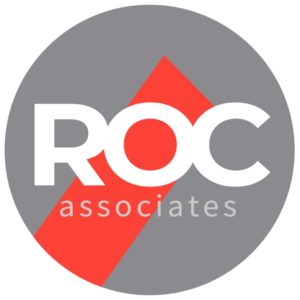The Help Desk Whisperer Part 2: Effectively Onboarding Help Desk Analysts
In last quarter’s newsletter article, we discussed some key areas of focus to keep your helpdesk employees engaged and empowered to put their stamp on building a successful help desk environment in order to better retain your top talent. By putting into action the recommendations from last quarter’s article you can achieve lower than the 40% national average for help desk employee turnover (Sherweb.com). Regardless, some attrition is inevitable, so it is important to take steps to plan for it and mitigate against it. In this quarter’s article we will discuss steps you can take to quickly and more efficiently onboard new help desk analysts while empowering your staff to take on training opportunities, and we will discuss knowledge base systems that can greatly improve the learning curve for ramping up new analysts so they can successfully contribute to the team in a short timeframe.
A Good Initial Onboarding Plan
After you’ve scoured the available talent pool and have found what you believe to be strong candidates for the Helpdesk Analyst position, the hard part is yet to come. Now your focus must turn to getting the new employee up to speed quickly without severely impacting your normal day-to-day activities. A good onboarding program consists of three important components: 1) Classroom Training, 2) Document Review Q&A and 3) On-the-job Shadowing. Ideally, your new hire will experience all three of these onboarding activities in a continuous cycle to help keep the onboarding interesting and engaging for the new hire. Cycling through these onboarding activities will also aid in reinforcing concepts learned by putting them into practice before learning new concepts.
Because everyone learns differently, it is a good idea for your onboarding program to be flexible enough for it to be tailored to the individual and don’t hesitate to adjust along the way. The current staff of level 1, 2, and 3 analysts will play a huge role in the development of your new hires as they will be the ones interacting with the new hire during the shadowing component and can also be responsible for leading detailed Q & A sessions. Over time, you will learn a lot about the individuals on your existing team and will see who excels at mentoring and training new hires. Once the initial onboarding plan is complete and your new hire is able to work on their own rather than shadowing others, their knowledge should be supplemented over time with a continual education program.
A comprehensive and easily searchable knowledge base
The mindset needed to create and maintain a good Knowledge Base can be a bit challenging for your help desk staff. Some analysts have a tendency to look at the knowledge they’ve acquired as their own intellectual property and what sets them apart from others, giving them a leg up when being evaluated for advancement in the organization. But in order for the whole help desk to be successful, it is important to fight against that basic nature and instead to foster and reward the sharing of knowledge by making the creation of knowledge articles part of the criteria for career advancement.
It’s very important that all levels have specific responsibilities and goals. For example, for a new hire, a goal of 4 new knowledge articles per quarter would be a realistic goal. The total number of required articles should increase each quarter, topping out at a number that’s reasonable for any level to complete. Once an analyst achieves a promotion to level 2, the quarterly goals should be adjusted to not only write articles but also to set aside time for reviewing and approving the articles created by level 1 analysts. A realistic goal for a level 2 analyst would be to complete or approve a total of 8 documents per quarter.
It’s not sufficient to focus only on having good content in your knowledge base, it must also be easily searchable. After all, if you can’t find the information you’ve worked hard to document, it won’t do you any good. This is why choosing the best Knowledge Base Software for your organization is so important. There are many software packages in the marketplace that are available for managing your knowledge base. Most case management software packages include a knowledge base component, which may or may not meet the requirements of excellent searchability. Because of this, utilizing a separate tool may be your best option. Below is a listing of the top 5 Knowledge Base Applications based on Gartner reviews (Gartner.com):
- Atlassian Confluence
- Notion
- Document360
- Guru
- Glean
In addition to those, we have also found that many organizations can successfully manage a knowledge base using Google Drive or Microsoft Sharepoint – tools that are available at no additional cost for those organizations. As long as documents are well organized, properly tagged or labeled, and the content follows documented templates for inclusion of all important keywords, then your knowledge base will be easily searchable, and your analysts will be able to find information quickly and efficiently whenever they need it.
Next Steps
Now that we’ve covered the steps you can take to most efficiently ramp up new help desk analysts, in our next installment we’ll dive a bit deeper into different approaches for ongoing training, whether that be attended or unattended training sessions, or self-guided learning, etc. If you’re managing a 24/7 Helpdesk, you have to get creative in your approach in order to reach everyone without impacting day-to-day operations. We’ll also discuss the value of Team Building Exercises, and—last but not least — we’ll discuss how to identify and correct situations when you have toxic behavior in your team.
As always, we offer a free one-hour evaluation where we can discuss your goals and the steps we can take to find and implement the right fit for your business.


Josh Carr
678-612-8168
